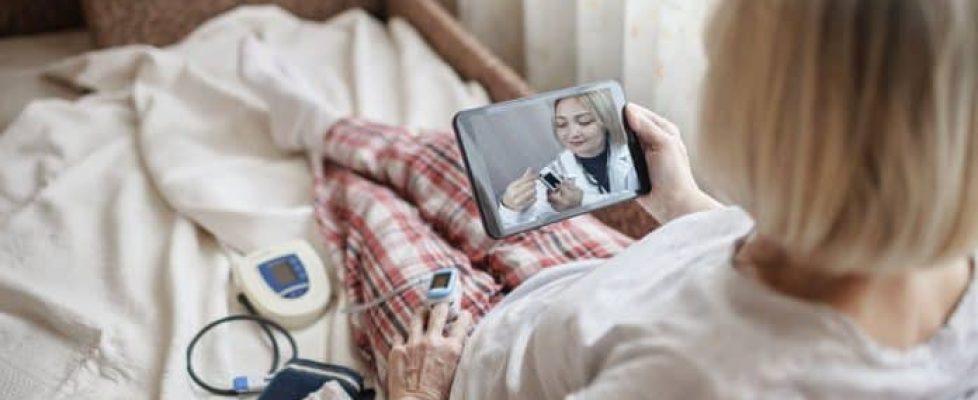Remote Patient Monitoring is Here To Stay: It’s Cost-Effective and Convenient
By Lyle Solomon
According to reports, 50 percent of Americans suffer from a chronic illness, which accounts for 86 percent of healthcare expenses.
Numerous institutions continue to use conventional chronic care models involving irregular, pricey, and uncomfortable in-person visits. How will hospitals deliver more comprehensive, timely, and reasonably priced care in the future?
Implementing remote patient monitoring (RPM) services is critical in certain health systems’ reconfiguration care models to provide proactive care for patients with chronic diseases and illnesses. RPM enables patients to exchange information from their homes and obtain treatment evaluations and suggestions in-between visits.
Why do people feel that RPM technologies will shape healthcare in the future?
In the past, health systems provided services in hospitals and clinics, anticipating that patients would travel to them. The world has evolved. The pandemic demonstrated that novel care models supported by digital technology could provide smarter and more practical healthcare.
The reality that the American population is aging and becoming sicker also cannot be ignored; over the next ten years, there will be more older adults than children. Furthermore, two out of every five persons in this aging population will have multiple long-term illnesses. Seniors will need assistance to live freely and avoid expensive nursing facilities.
Recognizing these convergent tendencies, the most cutting-edge healthcare systems act quickly to set themselves apart by offering more care-at-home options. Initial analysis indicates remote patient monitoring as one of those crucial healthcare skills supporting the Triple Aim:
● It provides convenient care at home, which leads to a higher patient satisfaction rate.
● Through data collection and proactive intervention, it fosters greater results.
● It can stop unnecessary emergency utilization and the accompanying expenditures.
How might RPM enhance the management of chronic care?
The widespread extensibility of remote monitoring solutions contributes to their immense popularity. They have been utilized for various illnesses, from COVID to asthma, in different non-clinical settings, including homes and schools. According to our research, the four primary chronic disorders that receive the most attention are diabetes, chronic obstructive lung disease, congestive heart failure, and hypertension.
By gathering and exchanging biometric data and patient-reported insights with care teams, who assess patterns and take appropriate action as needed, remote patient monitoring enhances chronic care management. Leading solutions encourage patients to boost self-care by providing data, education, and nudges.
Remote patient monitoring is an excellent patient engagement method. Positive health outcomes are more likely to occur when a patient is aware of their disease, specific treatment plan, and role in enhancing their health. Convenient access to health education resources raises the level of involvement even further.
They assist care teams with risk categorization, programmed alerts, and clinical recommendations. The greatest solutions optimize adoption and engagement by making their products and services accessible to as many individuals as possible, including those with language, literacy, cognitive, and technological challenges.
How might RPM help control the skyrocketing cost of healthcare?
Medical treatment is becoming one of the most expensive components of healthcare, and consumers and payers are seeking more affordability. Remote monitoring can slow or stop the spread of disease and reduce expensive therapies by moving care from the hospital to the home.
Many patients with medium- to high-risk chronic diseases are healthy enough to stay at home but still need frequent checkups to monitor their conditions.
When appropriately used, remote patient monitoring can lower the likelihood of unnecessary hospital visits, extended hospital stays, and readmissions. It is said that health systems might save $5.2 million annually for every 500 high-risk Medicare patients with numerous chronic illnesses.
Medical debt is a burning issue in the country. It is the leading cause of the high bankruptcy rate in the US. Those who fail to get relief through debt settlement are often forced to file for bankruptcy. Remote patient monitoring services may help to alleviate this problem to some extent.
Conclusion
When receiving care via RPM, the patient can avoid the related costs of an in-person visit. The inconveniences and costs associated with travel, parking, child care, and/or taking a day off from work are avoided by patients.
On the other hand, clinicians gain from remote patient monitoring by being able to triage each patient and case based on nearly real-time patient status, which enables them to prioritize treatment delivery. Numerous RPM systems can integrate with the provider’s EMR, minimizing redundant documentation.
RPM enables doctors to deliver some of that treatment electronically, which can help alleviate the load of excessively planned in-person visits in severe staffing shortages. It uses a care paradigm centered on a team that gives providers some flexibility.
Moreover, healthcare practitioners get quicker access to precise patient data thanks to connected health equipment used for remote patient monitoring. Implantable devices, pulse oximeters, blood pressure monitors, glucometers, and other tools fall under this category. When included in remote patient monitoring solutions, these gadgets and the data they produce can aid in accelerating diagnoses and facilitating prompt modifications to treatment plans.

